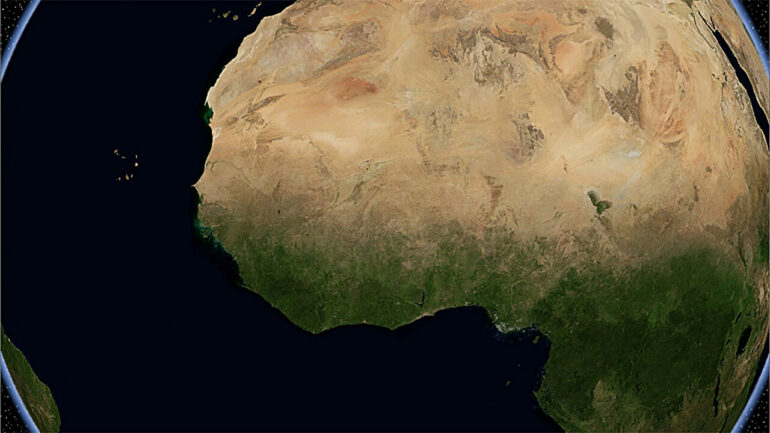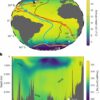Though it was the site of active tectonics 140 million years ago, today, the coast of West Africa is a passive margin, far from an active tectonic plate boundary and thought to be seismically quiet. So scientists don’t fully understand why the region is experiencing a growing number of earthquakes between magnitudes 2 and 5. The lack of widespread seismic monitoring stations across the region presents a major challenge.
In a study reported in Geophysical Research Letters, Legre and colleagues wanted to determine the type of slip (strike slip, normal, thrust, or a combination) behind West Africa’s earthquakes, as well as the orientation of the stresses along the passive margin and in the continent’s interior.
They examined the records of 62 seismic stations from between 1991 and 2021 and focused on 14 intraplate earthquakes that had high- to medium-quality waveform data.
Two of these earthquakes had enough waveforms that the scientists could determine their focal mechanisms from the seismograms. For the other 12, they used a multimode body wave inversion technique—an approach well-suited to sparse data sets that involves fitting the recorded ground vibrations to a model.
They found that the continental margin is undergoing a mix of thrust and strike-slip deformation. The area may also be further affected by stresses transferred from the oceanic crust to the passive margin and from tectonically active northern Africa to the continental interior.
The researchers conclude that the variable stress patterns and slip motion occurring in West Africa are from a combination of tectonic stress transfers and local stress perturbations causing the reactivation of crustal weaknesses from ancient shear zones and failed rifts. They also note that anthropogenic disturbances may be reactivating old structures—a cluster of earthquakes in a mining district in Mauritania was likely triggered by activity in iron ore mines.
The authors point out that their work provides the best compilation of intermediate earthquake data available, but they hope improved instrumentation and monitoring around earthquake clusters can expand the available data set.
More information:
Jean‐Joel Legre et al, The Intraplate Stress Field of West Africa, Geophysical Research Letters (2024). DOI: 10.1029/2023GL107614
This story is republished courtesy of Eos, hosted by the American Geophysical Union. Read the original story here.
Citation:
Ancient crustal weaknesses contribute to modern earthquakes in West Africa, study finds (2024, June 7)



